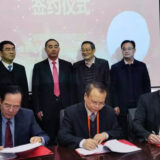UNCTAD report says advance biofuels to play key role in developing countries
Advanced biofuels made from non-food biomass, also known as second-generation biofuels, have become a commercial reality, a new UNCTAD report concludes. The report, Second-Generation Biofuel Markets: State of Play, Trade and Developing Country Perspectives, says that this is happening in the context of advanced technologies, economic pressures and a political will to act on climate change.
In the wake of the environmental commitments countries have made with the Sustainable Development Goals (SDGs) and the Paris COP21 climate change agreement, the report focuses on how the market for second-generation biofuels can be exploited, and how to make the technology available in developing countries.
With a specific focus on cellulosic ethanol, a new type of biofuel produced from wood, grass or the inedible parts of plants, the report provides a wide-ranging review as of 2015–2016 of the second-generation biofuels sector, maps selected cellulosic ethanol projects, and details recent policy developments from around the globe. A key factor in decreasing costs for the industry has been process improvements that have allowed the market to expand, the report says.
The United States has the largest installed capacity for cellulosic ethanol production and the greatest number of working second-generation biofuel facilities, the report found, followed respectively by the People’s Republic of China, Canada, the European Union (EU) and Brazil.
Projects in these countries vary significantly in their technological approaches as well as the raw material (“feedstocks”) used for fuel production. These include corn stover (plant material left in fields after grain harvesting, such as leaves and stalks), sugarcane bagasse (fibrous matter remaining after sugarcane stalks have been crushed to extract juice), municipal solid waste, and forestry residues.
The report found that EU- and U.S.-based companies have engaged in partnerships abroad to build advanced ethanol facilities: for example, the Fuyang Bioproject in China is the result of cooperation between Italy’s Beta Renewables and the Guozhen Group of China.
While, as of 2015, there were no cellulosic ethanol projects on the African continent and in Latin America (excluding Brazil), progress has been made in bagasse-fired electricity co-generation and biomass cook stoves in these regions, the report says.
Overall, two main strategies have given traction to advanced biofuels in the world. The first is a market-segmentation strategy in conventional/advanced cellulosic biofuels used in the US, and more recently in the EU with the adoption of limits for conventional biofuels, resulting in premium pricing. The second is the availability of national development bank loans that have reduced risk and promoted growth in the industry, especially in China and Brazil. Low interest rates and a venture-capital culture have also played a role in advancing the position of second-generation biofuels.
However, while production facilities have been scaled-up over the past three years, evidence suggests that actual production is much smaller than nominal capacities. This is due to a confluence of factors including high feedstock costs, high processing costs, incomplete domestic regulatory frameworks favourable to advanced biofuels, risk avoidance, and limits to the amount of biofuel that can be blended with conventional petroleum-based fuel in major markets.
In the United States, expected use of cellulosic fuels for 2015 corresponds to 400 million litres, or about 80% of installed U.S. capacity. Other countries are expected to have much lower rates of this indicator.
Trade opportunities may exist in second-generation biofuel markets, particularly as recent limits on first-generation (conventional) biofuels in Europe, together with the EU’s growing self-sufficiency in conventional biofuels, suggest that imports of second-generation biofuels will most likely be made if domestic producers fail to deliver their expected output. The U.S. is also likely to begin cellulosic ethanol imports in the years ahead, its own official statistics suggest.
The report notes that future rules on second-generation biofuels in international trade law should be well-balanced and should take into consideration the different conditions in which biofuels are produced around the world. Such rules should not create unjustifiable obstacles to international biofuel trade, particularly as long as there is a lack of scientific certainty about the “indirect land use change” effects on food prices, biodiversity and greenhouse gas emissions.











